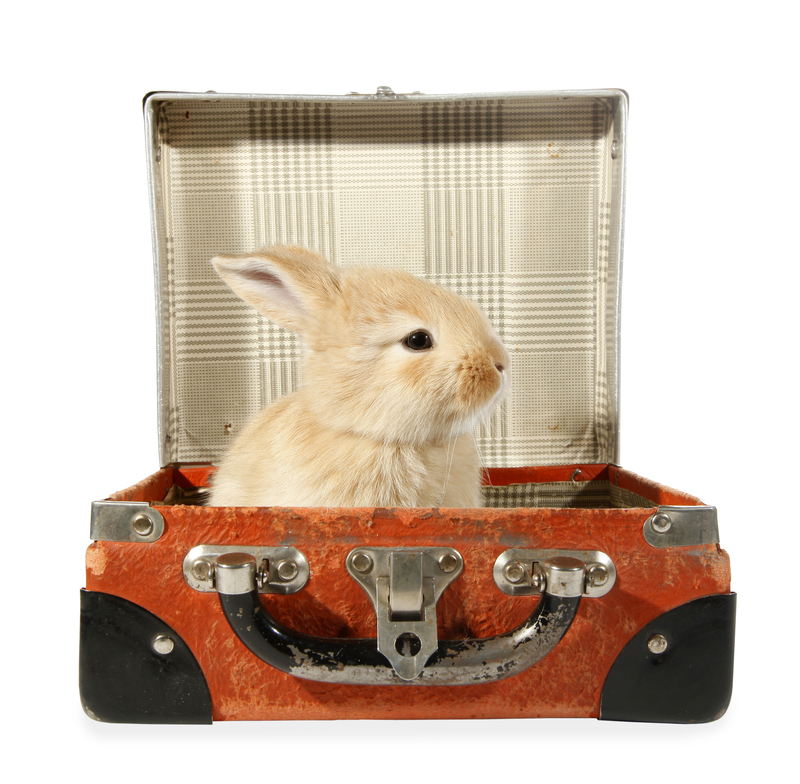Expert-Approved Techniques for Sofa Storage and Preservation
Posted on 17/05/2025
Expert-Approved Techniques for Sofa Storage and Preservation
Are you planning a home renovation, moving to a smaller space, or simply looking for ways to maintain your beloved furniture for the long run? Proper sofa storage and preservation are crucial to keep your couch in pristine condition, whether it's for a few weeks or several months. This comprehensive guide, backed by expert tips and industry-leading recommendations, will help you ensure your sofa remains as beautiful, comfortable, and valuable as the day you bought it.

Why Proper Sofa Storage and Preservation Matters
Your sofa is often a substantial investment -- both emotionally and financially. Prolonged neglect or improper storage can result in fabric deterioration, color fading, pest infestation, or structural damage, all of which can shorten its lifespan. By following proven techniques for storing and preserving your sofa, you not only protect your furniture but also save money on repairs and replacements in the long term.
- Upholstery damage can occur from moisture and dust.
- Frame warping or cracking is often due to improper placement or environmental factors.
- Odor and mold growth are common without proper ventilation and cleaning.
- Pest infestations, such as rodents or insects, can ruin both the appearance and structure.
Step-by-Step Expert Methods for Sofa Storage
1. Clean and Prepare Your Sofa Thoroughly
- Vacuum every surface, including gaps, crevices, and under cushions.
- For fabric sofas, use a mild upholstery cleaner to treat stains and scrub gently with a soft-bristled brush.
- For leather sofas, use a specialized leather cleaner and conditioner to prevent cracking.
- Allow your sofa to air dry completely; any remaining moisture can encourage mold or mildew growth in storage.
2. Disassemble If Possible
Many modern sofas can be partially or fully disassembled. Experts recommend removing detachable legs, cushions, and arms where possible. This makes the sofa easier to move, reduces the risk of warping or breaking, and allows for more compact storage.
- Label all hardware and components in sealed bags for easy reassembly.
- Wrap disassembled parts separately for extra protection.
3. Wrap for Maximum Protection
The right wrapping method can be the difference between a sofa that emerges from storage in perfect condition and one that requires costly repairs. Here's how to do it like a pro:
- Cover with clean cotton sheets or furniture blankets to allow the material to breathe while protecting from dust and light.
- Avoid plastic wrap directly on the sofa: plastic can trap moisture, leading to mildew or mold.
- For long-term storage, add a layer of bubble wrap only over the sheets for extra protection against physical damage.
4. Choose the Right Storage Environment
According to industry experts, the location of your storage is just as important as how you prepare your sofa. Here are key factors to consider:
- Climate-controlled storage units are highly recommended. Fluctuating humidity and temperature can cause fabric deterioration and wood warping.
- Elevate your sofa off the ground using pallets or blocks to avoid moisture absorption and improve air circulation.
- Never store sofas upright on their armrests or backs -- keep them in their normal position to prevent frame damage.
- Ensure good ventilation to prevent mold, mildew, and stale odors.
Special Considerations for Different Sofa Types
Fabric Sofas
Fabric sofas are especially vulnerable to moisture, dust, and pests. When preparing your fabric sofa for storage:
- Use a fabric protector spray after cleaning and before covering.
- Check for infestations such as moths, especially if your sofa has wool or natural fibers.
- Store cushions separately and in breathable bags where possible.
Leather Sofas
Leather requires extra care during storage to avoid drying, cracking, or fading.
- Apply a leather conditioner after cleaning.
- Keep away from direct sunlight or heat sources, as these accelerate aging and color loss.
- Avoid storing in overly humid or dry environments -- maintain moderate, steady humidity levels.
Antique or Valuable Sofas
For antiques or high-value pieces, consultation with a furniture preservation specialist is recommended. They may suggest:
- Custom-fitted covers made from acid-free materials.
- Silica gel packets or moisture absorbers placed nearby to control humidity.
- Regular on-site inspections during extended storage periods.
Preserving Your Sofa in Daily Use
Even if your sofa isn't being stored away, following preservation best practices can extend its life. Sofa care experts recommend:
- Rotate cushions and flip them regularly for even wear.
- Keep out of direct sunlight to prevent fading.
- Vacuum weekly to remove dust, crumbs, and allergens.
- Spot-clean spills immediately to avoid stains and odors.
- Apply fabric or leather protectors yearly as appropriate.
Pitfalls to Avoid When Storing Sofas
Even with the best intentions, mistakes can happen. Below are some common errors to steer clear of during sofa storage and preservation:
- Using airtight plastic covers that don't allow your sofa to breathe.
- Leaving the sofa in an unheated garage, attic, or basement where extreme temperatures and humidity can do their worst.
- Stacking heavy items on top of the sofa, which can flatten and misshape cushions.
- Ignoring the need for pest prevention (such as storing food or scented items nearby that may attract rodents).
Expert Maintenance Tips Post-Storage
When it's time to retrieve your sofa from storage, follow these professional steps to help it look and feel brand new:
- Unwrap in a clean, dry area and allow the sofa to acclimate to room temperature before use.
- Vacuum all surfaces to remove any dust or debris.
- Spot clean as needed to address any marks or odors picked up during storage.
- Consider professional cleaning for deeper refreshment, especially after long-term storage.
Sustainable and Eco-Friendly Sofa Storage Solutions
Eco-conscious consumers can also play their part in sustainable sofa storage:
- Choose reusable, natural-fiber covers instead of plastic wraps.
- Use reclaimed wood pallets to elevate your sofa.
- Opt for green-certified climate-controlled storage units to minimize environmental footprint.
Preserving your sofa carefully not only keeps your home beautiful but also reduces waste and the need for replacement furniture over time.

Frequently Asked Questions About Sofa Storage and Preservation
How long can I safely store my sofa?
With proper cleaning, wrapping, and a climate-controlled environment, sofas can be safely stored for several months to years. Regular checks every six months are recommended for long-term storage.
Should I treat my sofa with any chemicals before storage?
Yes -- using approved fabric protectors or leather conditioners is wise. Always air the sofa thoroughly to prevent chemical odors from building up in storage.
Is professional storage worth the investment?
For expensive or sentimental pieces, professional storage facilities often offer peace of mind with options like full insurance, 24/7 climate control, and pest-proofing.
Conclusion: Invest in Sofa Storage and Preservation for Future Value
Your sofa isn't just a piece of furniture -- it's a place for family gatherings, movie nights, and relaxation. Taking the time to store and preserve it properly pays back with years of continued comfort and style. These expert-approved sofa storage techniques ensure that when it's time to bring your couch home again, it will be ready for use, looking its best, and ready to make new memories.
If you're searching for more advice on furniture preservation, follow these guidelines and consult with local experts for personalized tips tailored to your sofa's material and design.
- Remember: Clean thoroughly before storage.
- Disassemble and wrap for protection.
- Choose climate control for long-term value.
- Maintain routine care at home for enduring beauty.
By investing in proper sofa storage and preservation, you safeguard both your comfort and your precious home investments!



